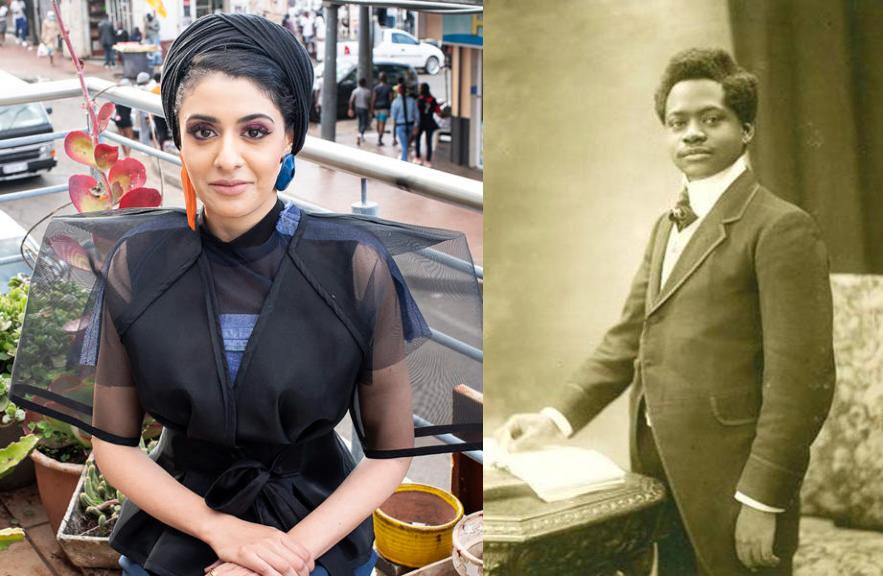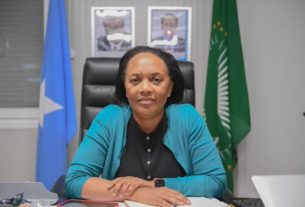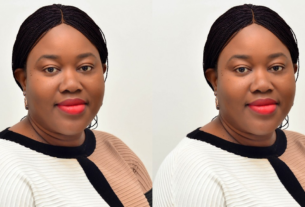Sumayya Vally, who was chosen in a competition to build a new bridge in the Belgian town of Vilvorde, discovered the story of Congolese architect Paul Panda Farnana and chose to pay tribute to him. Paul Panda Farnana is considered to be the first Congolese to have graduated from higher education in Belgium in 1907, at the horticultural school in Vilvoorde, in the Flemish region, where the bridge will be located.
The new bridge will link the Asiat park to the new Darse nature reserve in the town of Vilvoorde, Belgium. A series of shapes resembling boats will be linked together to create the Asiat-Darse pedestrian bridge. Each “boat” will contain plants. The bridge is designed by Johannesburg-based South African architect Sumayya Vally, founder and principal architect of the Counterspace architectural practice. With a budget of 300,000 euros, the construction project is due to start in April 2024 and be completed in December 2025.
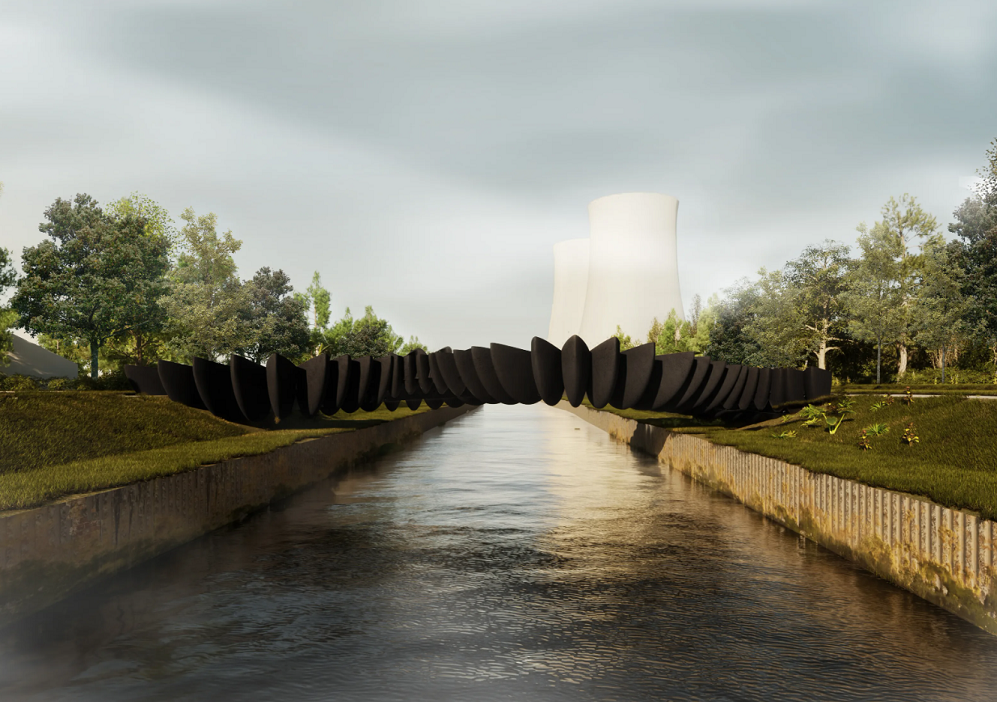
The new Asiat-Darse bridge
Sumayya Vally was chosen in a competition to design the new Asiat-Darse bridge in Vilvoorde. The competition proposal called for the creation of a bridge between the Parc Asiat and the new nature reserve on the Quai Darse, which is separated by the River Senne. Parc Asiat was a former military site, purchased by the city of Vilvoorde and converted into a public space connecting people to nature, with temporary and permanent structures for a variety of programmes and festivals. The pedestrian bridge was to serve as a transition between the two green areas, while also being visible as a work of art.
Reviving Paul Farnana’s legacy
To do this, explains Counterspace, Sumayya Vally turned to the stories and histories of the city’s minority communities. Through her extensive research, she discovered the moving story of Congolese activist Paul Panda Farnana. “Counterspace’s response to the briefing highlighted the story and legacy of Paul Panda Farnana, one of the city’s most important yet least recognised figures, who embodies the region’s complex relationship with past and future generations of migrant bodies and communities. As a result of our response, the local Belgian press and the public have become aware of the importance of this little-known key figure in the city,” says Counterspace in a press release published on 6 June 2023. This project, explains Counterspace, will revive Farnana’s legacy by drawing on his research and studies on different species, while linking them to the Congo.

The aquatic architectures of the Congo as one of the starting points
According to Counterspace, Sumayya Vally saw the aquatic architecture of the Congo as one of the starting points for honouring the story of Panda Farnana. “Along the Congo River, you often see fleets of pirogues moored together. As a collective, they form a common platform from which trade and collection can take place”, says the Cabinet.
The Asiat-Darse Bridge, which will itself be a gathering place for travellers, whether commuters or visitors, will be made up of a series of boats tied together to cross the canal. Indeed, explains Counterspace, Sumayya Vally has studied the plants and species to pay tribute to Paul Panda Farnana’s work as a horticulturist. “Each ‘boat’ shape serves as an isolated seedbed, in which specific plants can be grown so that their seeds can be spread by the wind and carried on the bodies of people crossing the bridge. In this way, the bridge pays homage to Farnana’s horticultural work, serving as a nursery or seedbed from which plants can spread and migrate across the site,” says the architectural practice. In addition to the main structure, the practice explains, several smaller boat structures are proposed, which integrate along the shoreline. “Each of them will bear the names of the workers whose names appeared on the Congo register, which the studio discovered during its research. Each boat will act as a pollinator – pollinating an industrial area and acting as a small reflective garden where passers-by can rest,” it explains.

Sumayya Vally says: “When we were asked to work on the bridge and discovered the history of Farnana through our research, I was interested in the idea of an active monument and a space for healing and remembrance. This is reflected in the history of the project, its form and the embodiment of Farnana’s research. It is also embodied ecologically in the way the project extends beyond the bridge to the wider ecosystem, in the form of small ‘boats’ that will pollinate the whole.”
The response to this project, Counterspace explains, is part of an ethos applied in the Cabinet: “every project, even the simplest or most neutral, is an opportunity to write our stories and our identities. A bridge is a connector – in our project, it is also a connector for past and future narratives of migration”. “I hope that this project will help to embody and communicate the history of Farnana, and that it will remind us, as architects, that we need to listen carefully to the motives of the contexts in which we work. There is always architecture waiting to be created in neglected places”, said Sumayya Vally.
First Congolese to graduate in Belgium
Born in the Congo in 1888, in the village of Zemba-lez-Moanda, Paul Panda Farnana was the son of the village chief. The Belgian occupation of the Congo at the time, says Counterspace, represents one of the most ruthless and exploitative examples of European colonial rule in Africa. “Farnana’s journey to Europe, his active service in the First World War and his advocacy of Congolese autonomy are an important reminder of forgotten and suppressed migrant voices, past and present,” says the architecture firm.
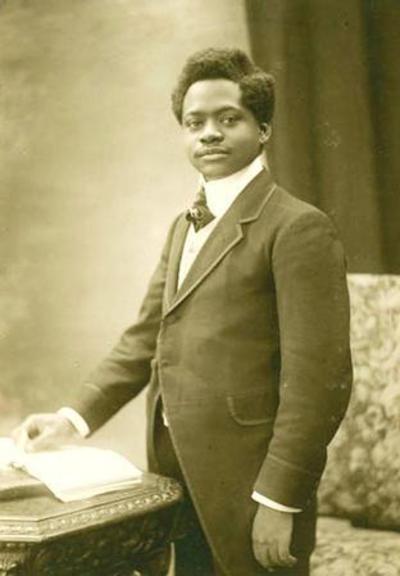
Sumayya Vally said: “Vilvoorde is a city celebrated for its diversity. It embraces multiple cultures, identities and stories. I was deeply moved to discover the story of Paul Panda Farnana as part of our research, which enabled us to respond to the city’s call for tenders for the construction of a pedestrian bridge”.
Paul Panda Farnana was sent to Vilvoorde as a domestic helper at a young age and spent many years there. Faced with constant discrimination, he nevertheless studied horticulture at the Vilvoorde horticultural school, located not far from the site where the bridge is to be built. After completing his secondary education at the Athénée d’Ixelles in Brussels, Paul Farnana passed an entrance exam for the National Horticultural School in Vilvoorde in October 1904. Three years later, he graduated with the highest distinction, becoming the first Congolese to obtain a higher education diploma in Belgium. In 1909, Paul Panda Farnana became the first Congolese to work for the Belgian state.
The mayor of Vilvorde, Hans Bonte, quoted by the Belgian media VRT, said that Paul Panda Farnana was a remarkable man.
Back to Congo
He then returned to the Congo, where he vehemently denounced the colonial methods put in place by the Belgians. He called, for example, for the spread of secular education and access for Congolese to universities in mainland France. He also argued for the participation of his compatriots in the colony’s decision-making bodies and for the Africanisation of its management. During the First World War, he fought at the front for the Belgian army and was taken prisoner in Germany. He died on 12 May 1930 in his native village of Nzemba, near Banana, aged 41.
Who is Sumayya Vally? (Source: Counterspace)
Vally’s design, research and pedagogical practice is searching for expression for hybrid identities and territory, particularly for African and Islamic conditions—both rooted and diasporic. Her process is often forensic and draws on the oral, aural, sound, ritual, supernatural, and the overlooked as generative places of history and work.

In 2022, Vally was selected by the World Economic Forum to be one of its Young Global Leaders, a community of the world’s most promising artists, researchers, entrepreneurs, activists, and political leaders, and, as a TIME100 Next list honoree, has been identified as someone who will shape the future of architectural practice and canon. She recently joined the World Monuments Fund Board of Directors, and serves on several boards through her interest in dynamic forms of archive, embodied heritage and supporting new networks of knowledge in the arts.
In 2019, Counterspace was invited to design the 20th Serpentine Pavilion in London, making Vally the youngest architect ever to win this internationally renowned commission. With the Serpentine, she has initiated and developed a new fellowship program, Support Structures for Support Structures, which assists artists and collectives working at the intersection of art with social justice, the archive, and ecology.
As Artistic Director, Sumayya has creatively shaped the inaugural Islamic Arts Biennale in Jeddah (January – April 23, 2023). From the theme, concept, narrative, creative direction of scenography, with design by OMA; through to the experience and theme identity, contemporary commissions and direction and oversight of overall experience and narrative. She is actively working to expand and deepen the definition of Islamic arts; in an effort to embed new discourses and manifest identities which are reflective, resonant and generative with the philosophies and experience of Islam.
She is collaborating on the design of the Ellen Johnson Sirleaf Presidential Center for Women and Development in Monrovia, Liberia, the first presidential library dedicated to a female head of state, where she will oversee the scenography, pavilions, and exhibition spaces. She is also working on a garden and gathering place commemorating the 5th Pan- African Congress held in Manchester, UK, in 1945.
Sumayya’s practice operates adjacent to the academy. For 6 years (2015-2021), she led the masters’ studio, Unit 12, at the Graduate School of Architecture, University of Johannesburg—founded by Professor Lesley Lokko, with the intent to create a curriculum for the African continent. She has taught and lectured widely, most recently as Pelli Distinguished Visiting Professor at the School of Architecture, University of Illinois Urbana-Champaign. Vally leads a new masters’ programme, Hijra, at the Royal College of Art and is an Honorary Professor of Practice at The Bartlett School of Architecture and recent
